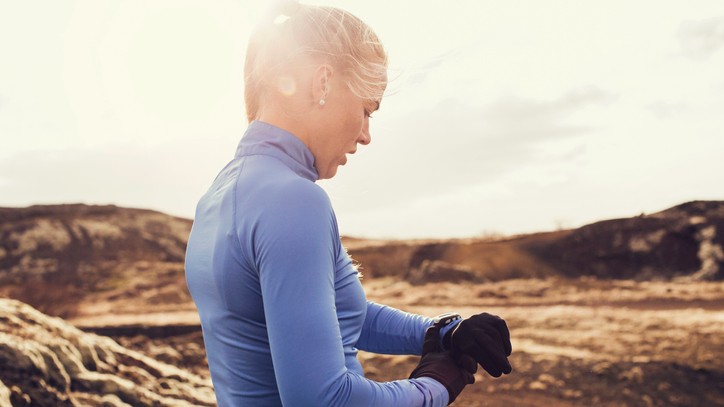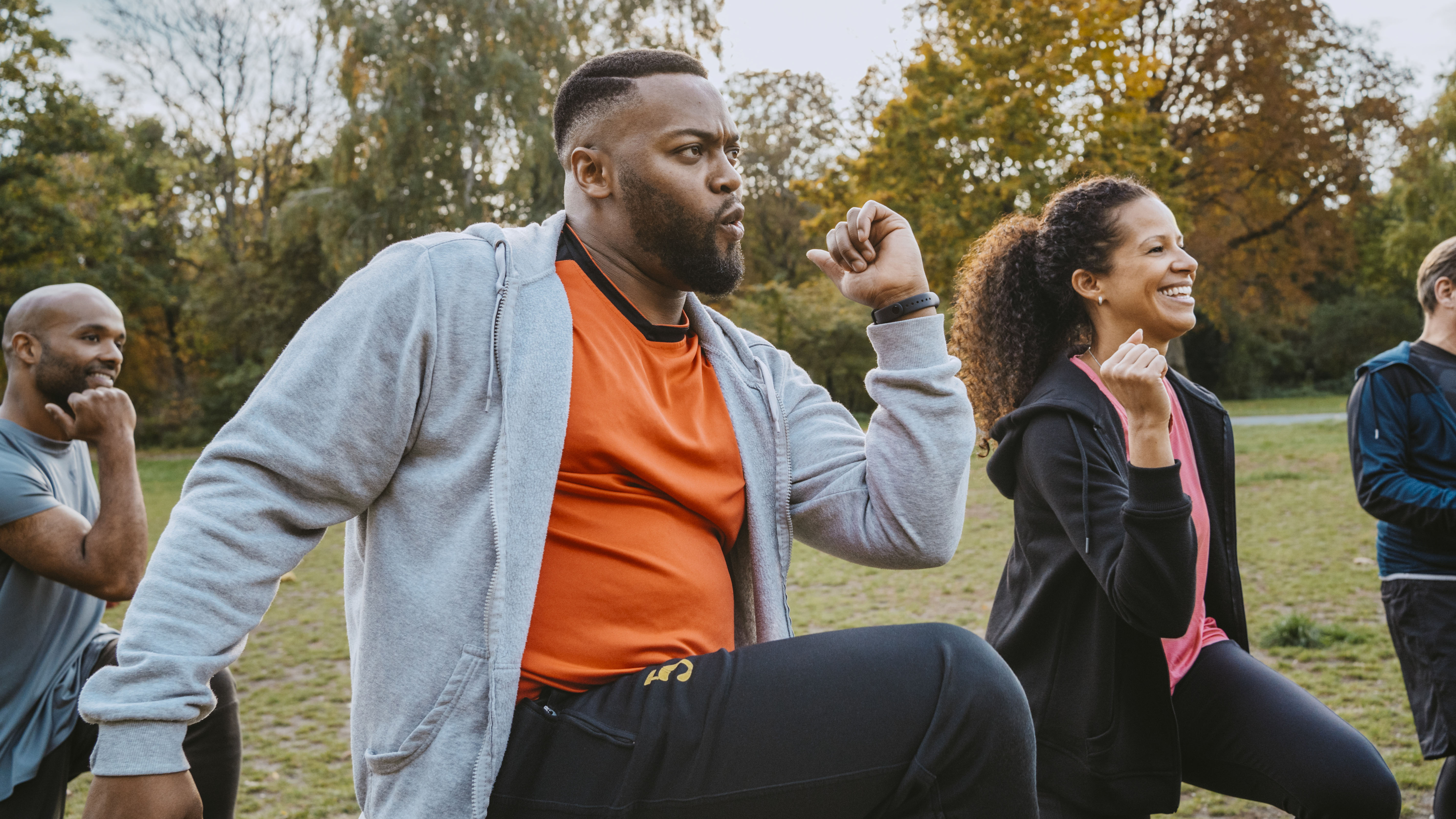Which exercise burns the most calories?
Wondering which exercise burns the most calories? We've consulted an expert in human metabolism to find the answer for you

The question of which exercise burns the most calories is one that many people find themselves asking at this time of year. Many of us may be embarking on a new fitness routine, or trying to lose weight. And if that’s the case, you’ll certainly be aware of calories and how tracking them can help with weight management.
So which exercise does burn the most calories, and helps you reach your goals most efficiently? Is pounding the belt and working up a swear on one of the best treadmills the best approach, or could getting on the yoga mat for a HIIT workout perhaps even be better?
It’ll probably come as no surprise to learn that intense workouts that raise your heart rate higher and use several different muscle groups in the body will burn more calories. But perhaps more important than choosing a type of exercise based on figures is finding the best, most sustainable exercise for you.
Before you decide that, though, it’s important to look at the basics. What exactly is a calorie, how can we measure how many we are actually burning? What other factors need to be taken into account? We spoke to Dr Javier Gonzalez, an associate professor in Human Metabolism at the Department for Health at the University of Bath, for all the answers.
What is a calorie?
You might count your intake of them on every food packet or add up your expenditure on your fitness tracker, but could you actually define what a calorie is? You’d be far from alone if the answer is no!
The calorie actually began use as a unit of heat in France in the 19th century, The scientist Nicholas Clément introduced the idea in a lecture on heat engines, and the word entered the English language specifically as a term defining the amount of heat needed to raise the temperature of 1kg of water from 0 to 1 degrees C. Not a lot to do with food! But the term did begin to be used in medical texts to refer to human energy needs, and by the end of the 19th century it was in use in America in official nutritional policy.

Javier Gonzalez earned his PhD in Human Nutrition and Exercise Metabolism in 2010. He currently works as a senior lecturer at the University of Bath. His research interests focus on human fuel use; he received the Julie Wallace Award in 2018 in recognition of his work. He also serves on the editorial board of The Journal of Physiology and is an Associate Editor for the International Journal of Sport Nutrition & Exercise Metabolism.
"A calorie is [now defined as] the amount of energy required to heat one gram of water by one degree celsius (at a standard atmospheric pressure)" explains Dr Gonzalez.
"In nutrition, we commonly measure the energy in food in kilocalories (kcals). For example, an average person in the UK might consume between 2000-2500 kcals per day."
The precise number of calories that an individual needs during each day depends on a whole array of factors, including their age, height, weight, build and their activity levels.

How calories are measured
We use calories now in two ways. Firstly to refer to the amount of energy we are ingesting via food and drink, and secondly as a way of expressing how much energy we are expending, both through our basal metabolic rate (the energy our body uses simply to go through the day) and through additional exercise. There are several different ways in which this can be measured with precision.
"The gold-standard laboratory measure involves sitting people in a room which measures the amount of heat they produce (known as direct calorimetry), but there is reported to only be one working direct calorimeter in the world currently," Dr Gonzalez says.
"The gold-standard measure under free-living conditions is a technique called doubly-labeled water, in which people drink a special water where the hydrogen and oxygen atoms in the water are 'labeled'. Measurements of these labeled hydrogen and oxygen are taken over a period of one-to-three weeks, and these can tell us the amount of carbon dioxide we have exhaled on average over that time period. This can be used to estimate total energy expenditure".

Fortunately for those wishing to track their consumption at home, there are now other more accessible methods of measurement, including estimating movement with accelerometers and heart rate monitoring.
The best fitness trackers now use heart rate and movement monitoring to provide an estimate of your calorie burn during certain activities. However, it's important to remember that while these figures can be useful for giving you a rough idea of your total daily energy expenditure, they tend not to be very accurate.
Factors that impact calorie burn
"The main factor that impacts our calorie burn at rest is the amount of muscle mass we have," says Dr Gonzalez.
“When we exercise, the main factor then becomes the intensity and type of exercise. For example, exercises which use more muscle groups result in more calories being burned than those involving fewer muscle groups.
“In addition, the more vigorous the intensity, the more calories we will burn. This is mainly limited by our fitness, so the people who can burn the most calories per minute are the elite endurance athletes."
Which exercise burns the most calories?
Dr Gonzalez explains that the specific types of exercise that burn the most calories are therefore intense activities that involve multiple muscle groups, both in the upper and lower body.
"Typically, whole-body exercises that involve weight-bearing and get us out of breath the most will burn the most calories, so running is probably the best example."
A report from Harvard Health Publishing produced a helpful chart containing the approximate calorie burn for 80 exercise methods, including gym activities like weightlifting, circuit training and stationary cycling as well as sports including football, soccer and running. The chart lists these for three different weights of person.
It also helpfully includes 18 outdoor activities and everyday tasks such as cooking, gardening and mowing the lawn. It even includes sleeping (which, in case you are wondering, burns 19 to 26 calories every 30 minutes, depending on your weight).

The weights the researchers have used for their estimated calorie burns are those for a 125-pound, 155-pound and 185-pound person, and use the University of Rochester Medical Center Calorie Burn Rate Calculator and the Ace Fitness Physical Activity Calorie Counter. Several of the activities are also included as multiple different figures as your calorie burn will depend on the intensity at which you do them.
Of all the activities listed in the chart, the most calories burned in 30 seconds was during cycling at 20mph. A 125-pound person would burn approximately 495 calories, a 155-pound person would burn 594, and a 185-pound person would burn 693,, according to the Harvard Medical School chart.
This high-speed bike ride was closely followed by running at 10mph, with 453 calories, 562 calories and 671 calories respectively. So, it’s no wonder treadmills and stationary bikes feature on our list of the best exercise machines to lose weight.
Among the gym activities calculated, vigorous stationary cycling (on one of the best exercise bikes) had the highest figure, with a 185-pound person burning an estimated 441 calories in half-an-hour. Meanwhile, the most energy-draining outdoor activities were chopping wood and shoveling snow – both burning 252 calories during 30 minutes of work.
How many calories should you eat to lose weight?
When we talk about calories, we are often doing so in the context of weight loss. This is because we can use the number of calories we consume against the number of calories we burn each day to determine our energy balance, and then adjust this according to our weight loss goals.
“The main determinant of body weight in the long term is energy balance," says Dr Gonzalez."If calorie intake is lower than calorie expenditure (often referred to as a calorie deficit) then we will lose weight in the long-term."
However, while it therefore might seem to make sense to chose the most efficient calorie-burning exercise in order to lose weight, there are other factors you should consider, including diet and your current activity levels.
"It is possible that the amount of calories burned during exercise could be offset by increased calorie intake," says Dr Gonzalez. Or, in other words, as we exercise more our appetite and consequent calorie consumption may increase, and we end up taking in more calories than we are actually using. Diet is therefore a crucial part of weight loss.
"In general, exercise [on its own] isn’t very effective for weight loss, but it does seem to help in preventing weight regain after weight loss" explains Dr Gonzalez.

This is partly simply because most of us do not have enough time, nor enough fitness, to achieve a significant calorie deficit through exercise alone.
A 2015 study published in the Progress in Cardiovascular Diseases journal found that "Substantial weight loss is unlikely to occur from a physical activity program unless the overall volume of exercise training is well above the minimum recommended levels."
However, exercise isn't just about weight loss. Dr Gonzalez encourages people to exercise for the multitude of other health benefits it offers:
"For health, it would be beneficial for people to include a wide range of exercises to gain the specific benefits that each can bring. For example, aerobic-type exercise like running can improve the health of the heart and circulatory system, whereas strength training can improve our general physical function and the health of our bones, tendons and muscles."
Get the world’s most fascinating discoveries delivered straight to your inbox.

Harry Bullmore is a fitness writer covering everything from reviews to features for LiveScience, T3, TechRadar, Fit&Well and more. So, whether you’re looking for a new fitness tracker or wondering how to shave seconds off your 5K PB, chances are he’s written something to help you improve your training.
When not writing, he’s most likely to be found experimenting with a wide variety of training methods in his home gym or trying to exhaust his ever-energetic puppy.
Prior to joining Future, Harry wrote health and fitness product reviews for publications including Men’s Health, Women’s Health and Runner’s World. Before this, he spent three years as a news reporter with work in more than 70 national and regional newspapers.
